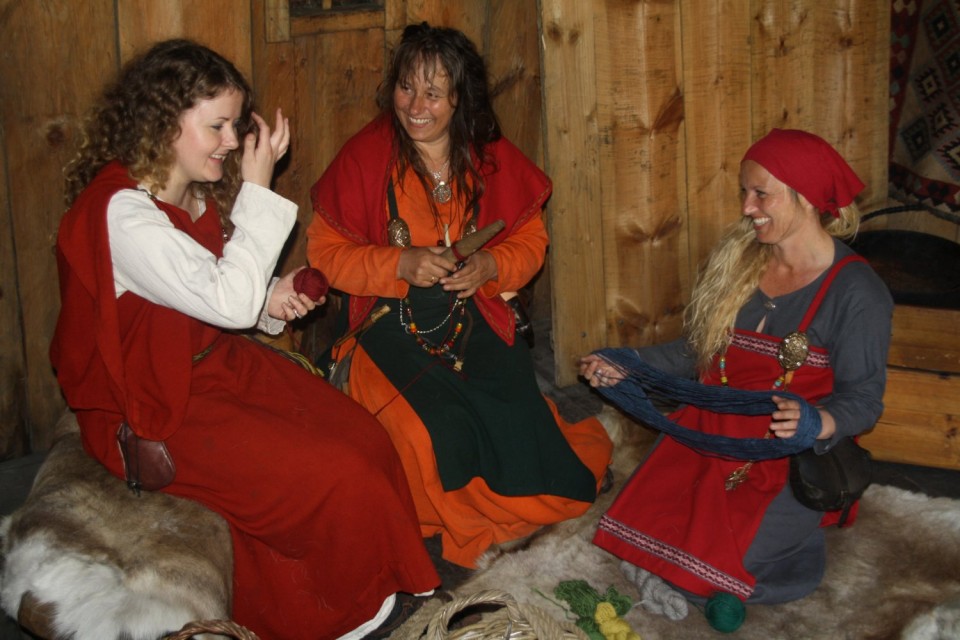The value of experimental archaeology is well-known. But what about reenactment? What kind of insights may be collected? New studies of the Viking Scene offer a better understanding

Dedicated reenactors work painstakingly and patiently to recreate the material world, which they inhabit. From clothes to weapons, knowledge of often lost crafts and technical skills are resurrected and relived during the long winters to be shown off and paraded during the many summer events. In this perspective, there is a marked affinity between reenactors and experimental archaeologists.
More so, this happens when museum curators take part in the recreation at dedicated museums to facilitate the experience of time travelling among visitors. Such facilitated experiences are a valid part of the activities offered at open-air museums, where they were invented in the late 19th century. Today, they are ubiquitous on the Viking Scene and a well-known feature at places such as at Jorvik Viking Centre in York, the Lofotr Viking Museum of Lofoten Avaldsnes in Norway and Ladby Viking Museum at Funen. Here, reenactment offers a valued experience for the onlookers and an apparent glimpse into the past as a foreign country. Other fine museums offering immersion are Haithabu near Schleswig and Ribe Viking Center in Denmark.
However, for reenactors, a job well done offers much more. Reenactment aims to feel rather than know history, they explain. As such, they are keen to try and gain some professional standing.
As cultural scientists will state categorically, this foray into a murky past is nothing but a phantasmagoria. No one can fully transcend the culturally framed sensory system which they have learned as part of their modern existence. We distinguish between colours and hear harmonies such as has been ingrained in us during our upbringing. The sensorial system is not just forged biologically, it is also shaped by cultural influences. As any anthropologist will tell you, in the end, you cannot “go native” for good.
“Therefore, while reenactment has educational and entertainment value, it should never be considered a reliable source for academic archaeological research” writes the authors. However, this does not necessarily mean there is no scientific value in recreative reenactment, Moilanen and Sahramaa state.
Nevertheless, by exploring several examples of how reenactors have been able to “correct” archaeologists, two Finnish scientists – an archaeologist and a biologist – have studied the multi-sensory aspects of Viking reenactments and how apparently authentic sights, sounds, scents, tastes and touches are interweaved. One such case has to do with the location of the tortoise brooches, which an archaeologist suggested should be placed on the breast rather than – as is the common opinion – below the shoulders. No, said female reenactors, this is an impossible location making it very uncomfortable – especially when breastfeeding. Another example – not mentioned here – might be the invaluable information gathered from building, manning and steering a Viking ship.
Thus, reenactment might be a valuable interpretive tool, they tell us, when it evolves around a performance built out of reconstruction, reproduction and reworking.
PHOTO:
Vikings at Avaldsness © Karmoy Kulturopplevelser
SOURCE:
Exploring materiality and sensory experience through Viking Age reenactment
By Ulla Moilanen & Jenni Sahramaa
In Time and Mind 24.05.2024 Open Access
ABSTRACT:
Serious reenactors typically possess valuable expertise in material culture, including a practical understanding of the use and potential application of objects and clothing. This prompts the question of whether their knowledge and experience could be used to improve the understanding of archaeological material culture, particularly from a sensory perspective. In this article, we explore the question in the light of our own observations and conversations with Nordic Viking Age reenactors, with whom we have collaborated for many years. We will also discuss the research potential of personal experiences and perspectives of reenactors and the limitations and challenges involved.
Sensory archaeology explores how past individuals engaged with their world through all their senses. The use of senses is also a cornerstone in Viking Age reenactment.
We argue that research on Viking Age material culture can benefit from the knowledge and experience of Viking Age reenactors, particularly when studying the sensory dimension of using and crafting objects.
The traditional dichotomy between archaeologists and reenactors can also be challenged, as many individuals can be professional archaeologists but also reenactors. The application of reenactment in archaeological research is nevertheless situated on the boundary between subjective experiences and objective academic research. For his kind of research to work, methodological rigour anda theoretical framework is required to ensure the reliability and validity of interpretations.
By applying a relevant theoretical framework, for example, one that embraces the theories of sensory archaeology, while acknowledging the nuanced interplay of authenticity and subjectivity, Viking Age reenactment can provide a unique tool to study Viking Age material culture.
